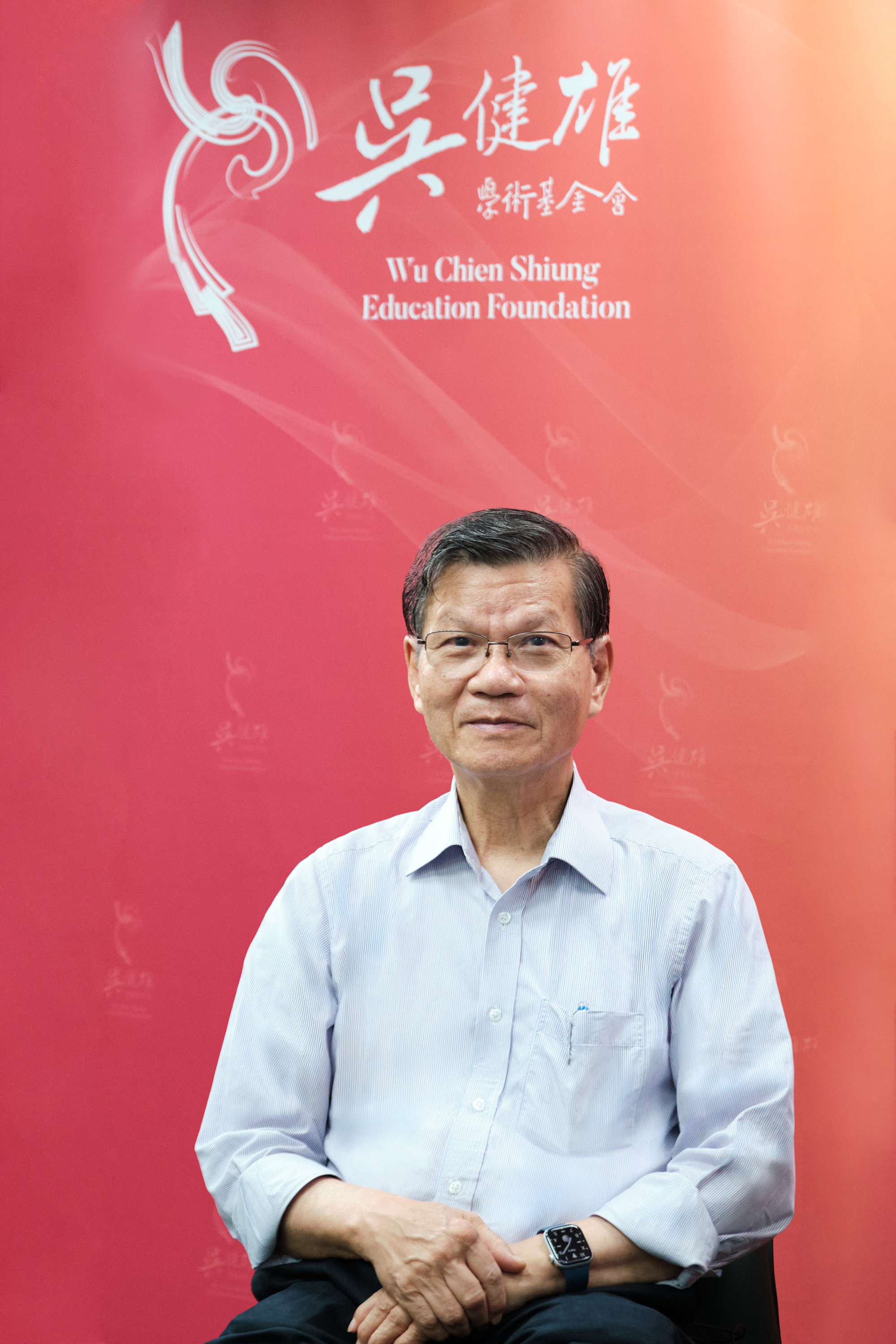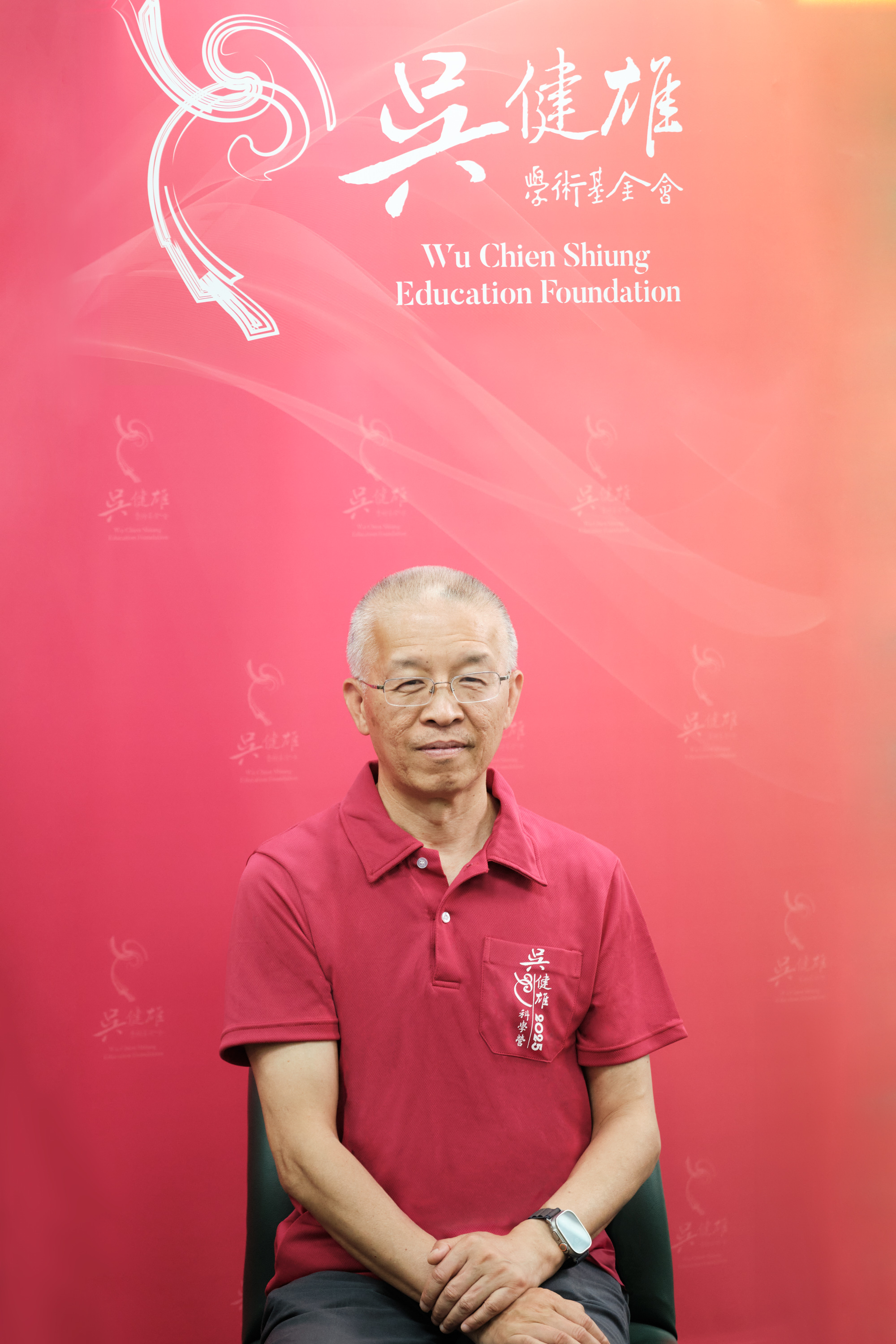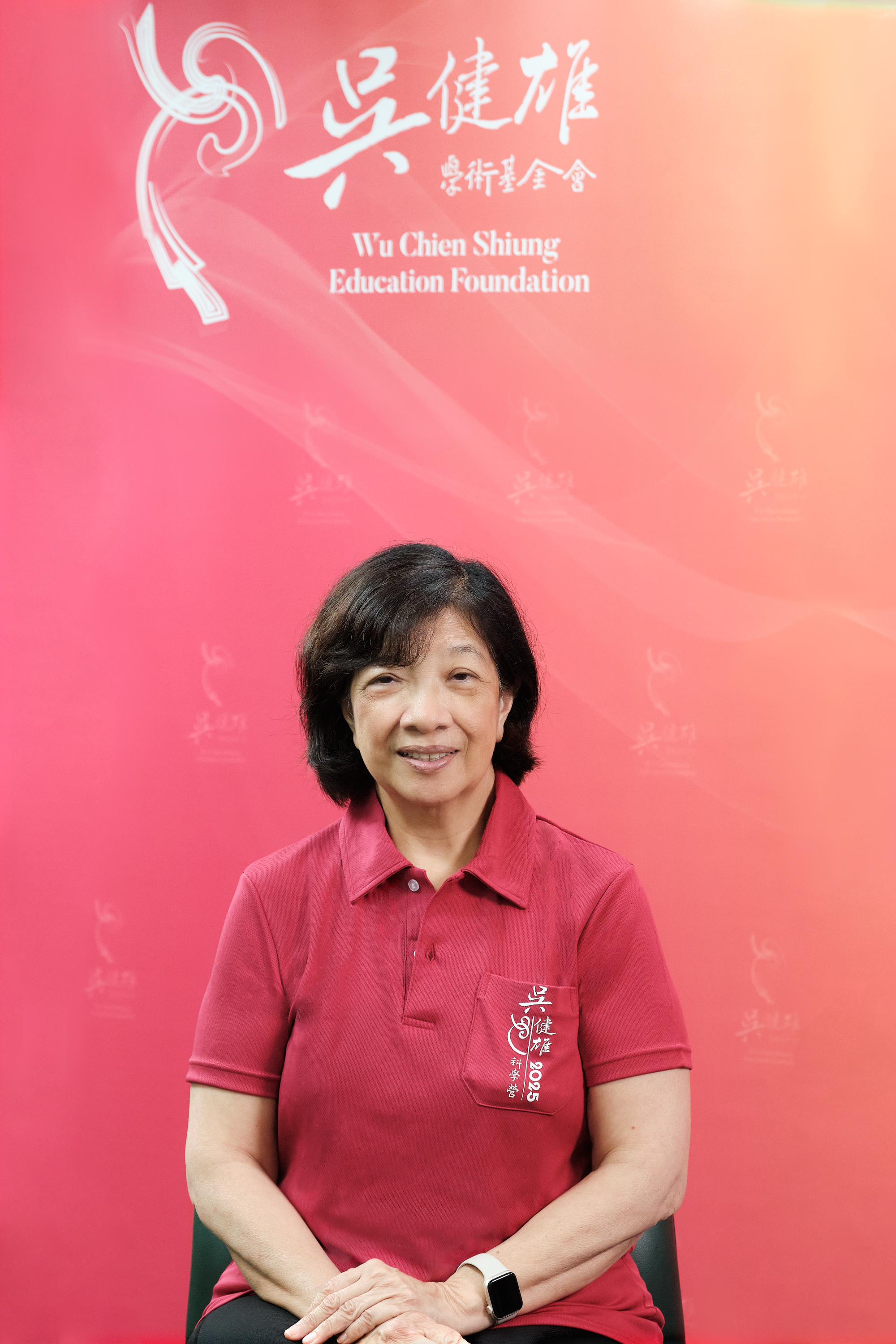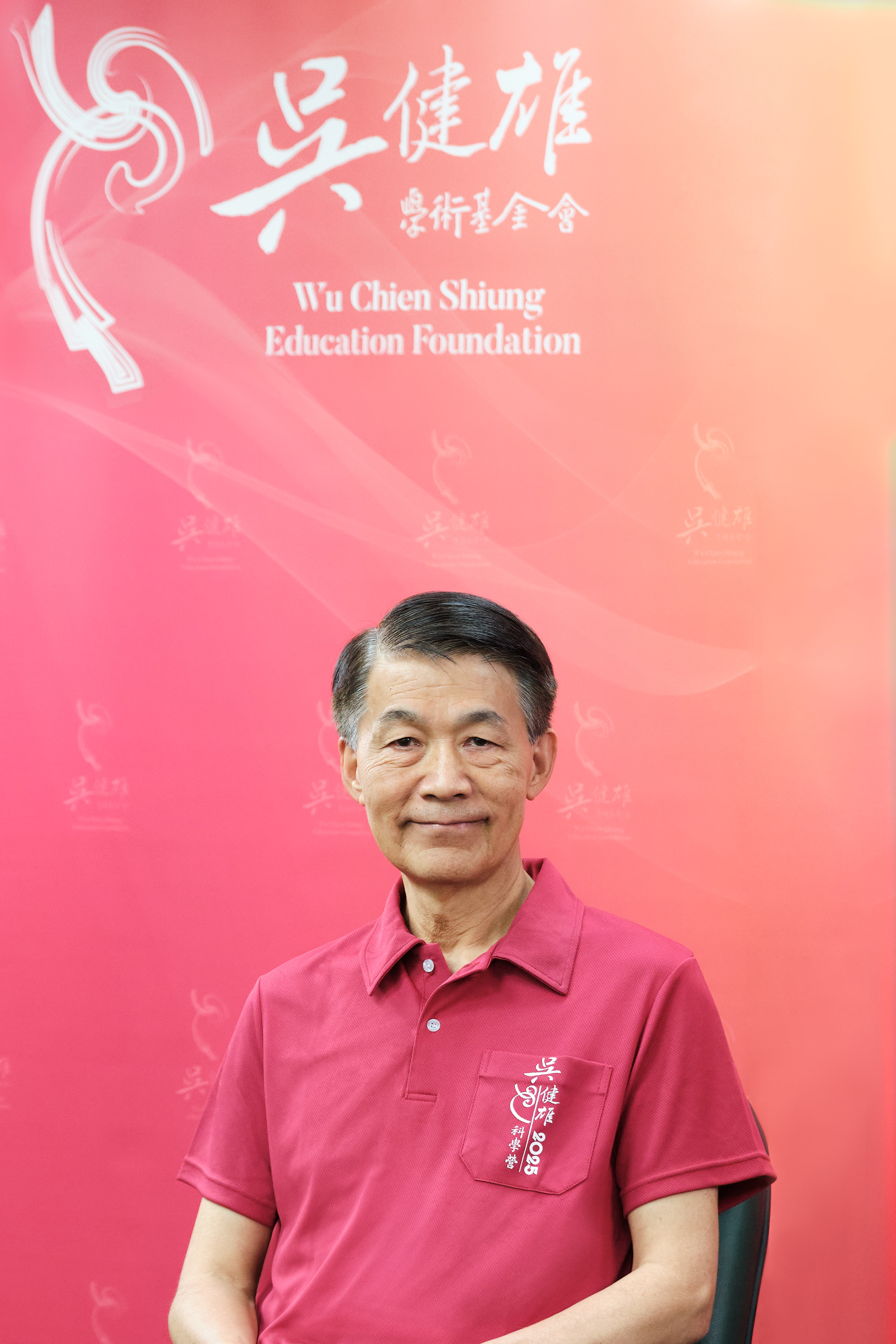講座大師
第 27 屆講座大師 |
|---|

翁啟惠教授 (Prof. Chi-Huey Wong)中央研究院基因體研究中心特聘研究員 美國加州Scripps研究院化學講座教授 前中央研究院院長、中央研究院院士 美國國家科學院院士 |
|---|
|
The Secret of Carbohydrates in Life
生命中碳水化合物的秘密 |
|
The process of adding sugars to a molecule is called glycosylation. It is a reaction used by Nature to modulate the structure and function of biomolecules. Most human pathogens like viruses, depend on the host glycosylation machinery to create a sugar coat on the cell surface to complete their life cycle and escape immune response. Understanding the role of cell surface glycans in viral infection and immune response requires easy access to this class of complex materials to develop antiviral strategies. This lecture will present our recent development of efficient and environmentally friendly methods for the synthesis of complex carbohydrates and glycoproteins and their application to the development of low-sugar universal vaccines and glycoengineered antibodies with improved efficacy in Fc-mediated killing. 將糖分子添加到其他分子上的過程稱為醣基化。這是大自然用來調節生物分子結構和功能的一種反應。大多數人類病原體,如病毒,依賴宿主的醣基化機制,在細胞表面形成糖衣,以完成它們的生命週期並逃避免疫反應。要理解細胞表面聚糖在病毒感染和免疫反應中的作用,必須能方便取得這一類複雜物質,以便開發抗病毒策略。 本演講將介紹我們近期在合成複雜碳水化合物和醣蛋白方面所開發的高效且環保的方法,並探討其在低糖廣效疫苗開發以及提升Fc介導殺傷效能的醣基工程抗體設計中的應用。 |

陳剛 教授 (Prof. Gang Chen)美國麻省理工學院機械工程系講座教授 美國國家科學院院士 中央研究院院士 |
|---|
|
MIT Research, Education, and Entrepreneurship Ecosystem
麻省理工學院的科研、教育與創業生態系統 |
|
MIT is known not only for its breakthrough fundamental research and its exceptional education, but also for its innovations and societal impacts. Currently, there are over 30,000 active companies funded by MIT alums, which generate over $2 trillion revenues, comparable to world’s 10th economy. This lecture will share personal observations of the research, education, entrepreneurship ecosystem at MIT. 麻省理工學院不僅以其突破性的基礎研究和卓越的教育聞名於世,還以其創新能力和對社會的深遠影響而著稱。目前,由MIT校友創立的活躍企業超過3萬家,年營收總額超過2兆美元,相當於世界第十大經濟體。本演講將分享我對麻省理工學院科研、教育與創業生態系統的個人觀察與見解。 |
|
Hidden in Plain Sight: Light Evaporation without Heat
隱而未顯的日常現象:光致蒸發無需加熱 |
|
In recent years, experiments from different groups have reported that evaporation under sunlight from hydrogels and other porous materials can exceed the thermal evaporation limit by several times, i.e., super-thermal. We hypothesize that photons can directly cleave off water clusters at the liquid-vapor interface in a way similar to the photoelectric effect, which we call the photomolecular effect. I will discuss our over-20 different experiments on both hydrogel and a single water-air interface supporting this hypothesis. Our work could resolve a 70-year puzzle in atmospheric science: experiments reported more cloud absorption than theory could predicts, and may be related to why do we live in a green world. Progress in theoretical description of the photomolecular effect will also be summarized. Our study suggests that the photomolecular effect should happen widely in nature, from clouds to fogs, ocean to soil surfaces, and plant transpiration, and can also lead to new applications in energy and clear water. 近年來,多個研究團隊的實驗發現,在陽光照射下,水凝膠以及其他多孔材料中的蒸發速率可達到熱蒸發極限的數倍,即出現「超熱蒸發」現象。我們提出一個假設:光子可以像光電效應中激發電子一樣,直接從液-汽介面上直接解離水分子團簇,我們稱之為「光分子效應」。我將介紹我們在水凝膠系統以及單一水-空氣介面上進行的20餘項實驗,這些實驗結果均支持該假設。 我們的研究可能破解一個困擾大氣科學界長達70年的謎題:為何實測雲層對光的吸收遠高於理論的預測值;甚至可能與地球成為宜居星球的成因相關。此外,我還將簡要介紹我們在光分子效應理論建構的最新進展。 我們的研究表明,光分子效應可能在自然界中普遍存在:從雲霧、大海、土壤表面到植物蒸散作用;同時也有望帶來能源與清潔水方面的全新應用。 |

丁邦容 教授 (Prof. Jenny Ting)美國北卡羅萊納大學教堂山分校醫學院特聘教授 美國國家科學院院士,中央研究院院士 |
|---|
|
Immunology: from hocus pocus to a most exciting field
從神秘玄奇到最引人入勝的科學領域 |
|
Although the general idea of an immune system has been around since ancient civilizations such as Greece and China, the science of vaccination advanced by Edward Jenner in the late eighteenth century is largely credited with the beginning of modern day Immunology. However immunological concepts are at times difficult, complicated and unique, such that many non-immunologists have ignored or ridiculed some of the ideas. This has taken a drastic change in the last few decades where immunologic concepts are at the frontline of medical discoveries. When we think about some of the most important advances, they frequently are based on immunology. As examples: the use of monoclonal antibodies to treat a wide variety of diseases; the rapid deployment of vaccines using modern day technology; the concept of immune checkpoints to combat cancer; the generation of chimeric T cell receptors to treat cancer and autoimmunity with precision. I will cover these topics and my own field of innate immunology and its promise for the future. 儘管免疫系統的基本概念自古希臘和中國等古代文明以來就已存在,但由Edward Jenner於18世紀末推動的疫苗學,被廣泛認為是現代免疫學的起點。然而,免疫學概念有時複雜、難懂且獨特,以至於被許多非免疫學家忽視或嘲笑其中的一些觀點 。過去幾十年,這一情況發生了劇變,免疫學概念如今處於醫學發現的前沿。當我們思考一些最重要的進展時,往往發現它們是立基於免疫學。例如:使用單株抗體治療各種疾病;利用現代技術快速部署疫苗;免疫檢查點的概念用於抗癌;生成嵌合T細胞受體,精準治療癌症和自身免疫疾病。我將討論這些議題和我自己從事的先天免疫學領域及其未來前景。 |
|
What does it take to make it in Science?
如何在科學領域取得成功? |
|
For young people who plan to embark on a scientific career, it can be a bit intimidating to think about one’s chance of success, and a frequently unspoken question is: what does it take for me to succeed in science? Although there is no set answer to this very difficult question, and there will likely be as many answers as there are scientists, it is still good to get many scientists’ perspective. There are the typical answers, such as hard work, organization skills, motivation, intelligence, creativity, emotion IQ etc. There are other things that we only have partial control over, such as having great mentors. Finally, there are yet other points that are totally out of our control, such as luck. However, the saying that “luck favors the prepared mind” is even more important than just having luck. A key question is how does one have a prepared mind? How does one look at scientific results and figure out the puzzle? 對於有志投身科學事業的年輕人來說,思考自己成功的機率可能會令人有些忐忑不安,而一個常被回避的問題是:我需要具備什麼,才能在科學領域取得成功?雖然這個非常困難的問題沒有固定的答案,言人人殊,答案的數量可能和科學家人數一樣多,但廣泛聽取科學家的觀點仍大有裨益。 通常的答案包括努力工作、組織能力、動力、智力、創造力、情商等。還有一些我們只能部分掌控的因素,比如獲得傑出導師的指導。最後,還有一些完全無法控制的因素,比如運氣。然而,「運氣眷顧有準備的頭腦」這句格言比單純依賴運氣更為重要。關鍵問題在於:如何鍛造一個有準備的頭腦?如何審視科學資料並洞察其中的玄機? |

余振華 博士 (Dr. Douglas Yu)台灣積體電路公司卓越科技院士暨研發副總經理 美國國家工程院院士、中央研究院院士 |
|---|
|
Heterogeneous Integration- a Semiconductor Industry Game Changer
異質整合—半導體產業的遊戲規則改變者 |
|
Moore’s Law guided semiconductor technology migration pace since integrated circuits are commercialized 60 years ago. Moore’s Law scaling has propelled the growth of Very Large Scale Integrated (VLSI) circuit. Micro-/Nano-electronics devices have played fundamental roles in modern science and technology (r)evolutions. However, semiconductor industry encountered major challenges when scaled semiconductor device approaching physical limits in recent years and, simultaneously, with escalating demands on higher energy efficiency and performance, as well as cost-effectiveness for smart mobile devices, High Performance Compute (HPC) AI/Machine Learning and Generative AI, etc. To overcome those challenges, we have taken a new “Heterogeneous” integration (aka. Chiplets integration) approach with disruptive TSMC 3DFabricTM technology. This is a new and exciting ball game that maintains or even exceeds Moore’s Law at system level. It changes Semiconductor industry landscape and make tremendous impact to the society and human life. 自從60年前積體電路商業化以來,摩爾定律一直指引著半導體技術的前進步伐。該定律所稱的尺度微縮推動了超大型積體(VLSI)電路的發展。微電子/奈米電子器件已在現代科學和技術的演化和革命中扮演著基礎角色。然而近年來,隨著半導體器件尺寸逼近物理極限,同時對於智慧移動設備、高性能計算(HPC)、人工智慧/機器學習以及生成式人工智慧等領域,對能效、性能和成本效益的需求持續攀升,半導體產業正面臨重大挑戰。 為了克服這些挑戰,我們採用了一種新的「異質」整合方式(也稱為小晶片整合),結合了具有顛覆性的台積電3DFabric™先進封裝技術(3維晶片架構)。這是一場全新且令人興奮的科技競賽,不僅能在系統層面上延續甚至超越摩爾定律。它正在重塑半導體產業的格局,並且將對社會和人類生活產生巨大的影響。 |
|
Next Semiconductor Technology Paradigm Shift
下一代半導體技術典範轉移 |
|
With the pervasive adoption of HPC/Generative AI in Data Center and at Edge, as well as new applications such as autonomous driving, humanoid robots, and AR/VR, etc., we see not only the requirements on higher energy efficiency and performance become more stringent, but hyper-scale compute are also required. To meet these goals, another paradigm shift of semiconductor technology is needed. A new heterogeneous integration technology of Electronic and Silicon Photonics devices is on the horizon to address those issues. 隨著高效能運算(HPC)/生成式人工智慧(Generative AI)在資料中心和邊緣端的廣泛應用,以及自駕車、人形機器人、擴增/虛擬實境(AR/VR)等新興應用的出現,不僅對能源效率與運算效能的要求愈發嚴苛,對超大規模運算能力的需求也日益提升。為達成這些目標,半導體技術必須再度迎來一場典範轉移。一項嶄新的異質整合技術,將電子元件與矽光子元件結合,正逐漸浮現,以因應這些挑戰。 |